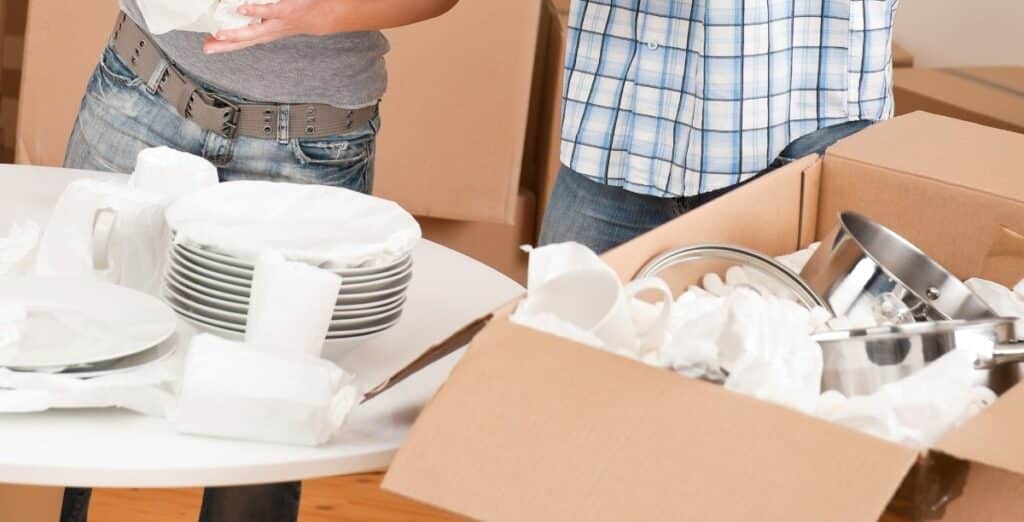Moving can be stressful, but packing your kitchen doesn’t have to be a nightmare. With a bit of planning and organization, you can ensure that all your kitchen items make it to your new home safe and sound. Let’s dive into the step-by-step process to make your kitchen move as smooth as possible. Pack a Kitchen for a Move
Planning Your Kitchen Move
Before you start throwing things into boxes, take a moment to plan your move. Begin by assessing your kitchen inventory. Take stock of all your items, from the smallest utensils to the largest appliances. This will help you determine the amount of packing supplies you’ll need.
Decluttering Your Kitchen
Moving is the perfect time to declutter. Go through each cabinet and drawer, and decide what to keep, donate, or discard. If you haven’t used something in the last year, consider letting it go. This will not only reduce the number of items to pack but also make your new kitchen less cluttered.
Packing Fragile Items
Fragile items require special care. Start with your glassware. Wrap each piece individually with packing paper or bubble wrap, and place them in a sturdy box with dividers. For dishes and plates, stack them vertically and use plenty of padding. Wrap mugs and cups individually and fill any empty spaces in the box with packing peanuts or crumpled paper to prevent movement.
Packing Appliances
Small appliances like toasters and blenders should be packed in their original boxes if possible. If you don’t have the original packaging, use a box that provides a snug fit and cushion the appliances with packing paper. For large appliances like refrigerators and ovens, follow the manufacturer’s instructions for moving. Secure all electrical cords and components with twist ties or zip ties to keep them from tangling.
Packing Utensils and Cutlery
When it comes to utensils and cutlery, organization is key. Bundle your flatware together using rubber bands, and wrap them in kitchen towels to save on packing materials. For knives and sharp objects, use a knife guard or wrap each knife in a dish towel, then secure it with a rubber band.
Packing Pots and Pans
Nesting pots and pans can save a lot of space. Place a layer of packing paper or a dish towel between each pan to prevent scratches. Be particularly careful with non-stick surfaces to avoid damaging them during the move.
Packing Food Items
Sort your food items into perishables and non-perishables. Consume or donate perishables before the move. For non-perishables, check expiration dates and discard any items that are past their prime. Pack pantry items in a sturdy box, and make sure to seal any open packages to prevent spills.
Labeling Your Boxes
Clear labeling is crucial for an organized move. Label each box with its contents and the room it belongs to. For kitchen items, be as detailed as possible. This will make unpacking much easier and help you find what you need without digging through every box.
Loading the Moving Truck
When it’s time to load the moving truck, place heavier boxes on the bottom and lighter, fragile items on top. Make sure to secure all boxes to prevent them from shifting during transit. It’s a good idea to keep essential kitchen items accessible so you can unpack them first at your new home.
Unpacking Your Kitchen
Once you arrive at your new home, start by unpacking the essentials. This might include items like your coffee maker, essential utensils, and a few pots and pans. Organize your kitchen in a way that makes sense for your cooking habits, and try to make it as efficient as possible.
Tips and Tricks for a Smooth Kitchen Move
Time-Saving Tips:
Start packing your kitchen at least a week in advance. Pack a few boxes each day to avoid last-minute stress.
Common Mistakes to Avoid:
Don’t overpack boxes. Heavy boxes are more likely to break or cause injury. Also, avoid packing sharp objects without proper protection.
Conclusion
Packing a kitchen for a move requires careful planning and organization, but with the right approach, it can be done efficiently and safely. Remember to declutter, use plenty of packing materials for fragile items, and label everything clearly. By following these tips, you can ensure that your kitchen items arrive at your new home in perfect condition.
FAQs
How long does it take to pack a kitchen?
Packing a kitchen can take anywhere from a few hours to a couple of days, depending on the size of your kitchen and the number of items you have. Start early and pack a little bit each day to make the process more manageable.
What should I pack last in my kitchen?
Pack essential items last. This includes things you use daily, like your coffee maker, a few utensils, and any essential cooking tools. This way, they are easily accessible when you start unpacking.
How do I pack kitchen knives safely?
Wrap each knife in a dish towel and secure it with a rubber band. You can also use knife guards or place them in their original packaging if you still have it. Make sure they are well-padded to avoid any accidents.
Can I leave food in the fridge during the move?
It’s best to consume or discard perishable items before the move. Transporting a refrigerator with food can be tricky and may lead to spoilage. Instead, pack non-perishable items and buy fresh groceries after you’ve settled into your new home.
How do I unpack my kitchen quickly?
Prioritize unpacking the essentials first. Set up items you use daily, then move on to less frequently used items. Having a clear plan and labeling your boxes in detail will help speed up the process.

